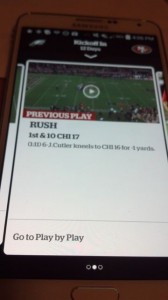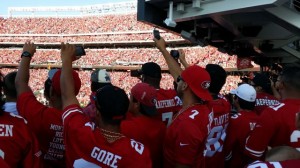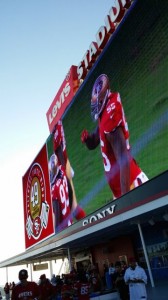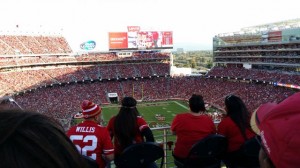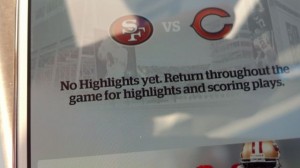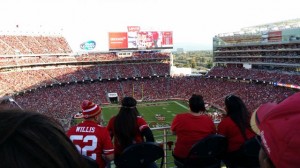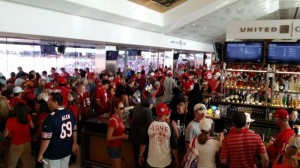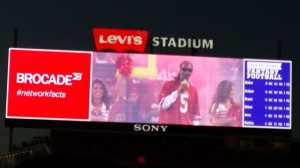We’ll have a longer profile with VenueNext soon — since there are no other customers yet other than the Niners, we have a little time to catch up. What’s most interesting is that the team actually helped create VenueNext, funding its start through Aurum Partners LLC, the investment firm of the team’s ownership. VenueNext is led by COO and founder John Paul, a name we remember well since we interviewed him way back in his days at networking pioneer Banyan (when yours truly worked for a publication called Unix Today!). Mr. Paul’s decorated tech career includes stops at Netscape and Slingbox, among others.
In a phone interview with Paul, he said VenueNext hopes to sign up as many as 30 customers for its app development efforts over the next year. The VenueNext team, which has offices in Palo Alto, Calif. and New York, has 25 engineers and is also seeking additional venture funding, Paul said.
“Jed [York, the Niners’ CEO] is very open to us using Levi’s as a Petri dish,” Paul said. “Now the goal is to go license this to the world.”Paul also corrected our reporting that the instant replay feature on the Levi’s app (which was live for the first time at Sunday’s home opener) didn’t have multiple camera angles available; the multiple angles were there, Paul said, in the upper left corner of the video window, visible when the player was stopped and a user tapped on the screen.
We did counter with an opinion that the feature was hard to find, and after a brief debate about application UI preferences Paul did say that the app was being constantly updated and that fans would “see enhancements” as the season continues.
As we said, look for a longer profile of VenueNext and its Levi’s app efforts soon.
